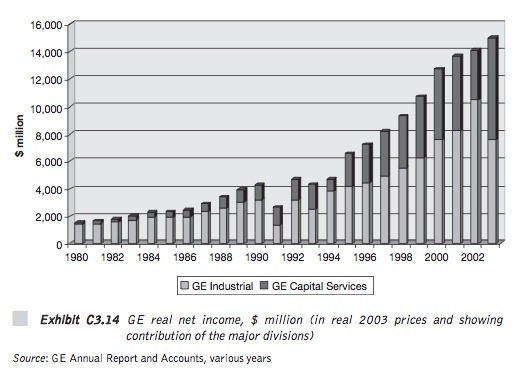Mike Konczal makes a key distinction that importantly frames recent discussions about “rentiers.” In my words:
Rent is money received for having money.
Profit is money earned for using money (your own and others’) to generate and sell real production — goods and services that have human value.
As I’ve suggested in previous posts, American corporations generate a far larger percentage of their “profits” today from rent (as opposed to real profit) than in decades past. And corporate leaders are, increasingly, not intrepid industrialists and entrepreneurs, but financiers. It’s getting harder to distinguish between the real economy and the financial economy.
In an earlier post, Mike gives us this graph as demonstration:

I’ve tried to dig up more comprehensive data on the percentage of corporate “profits” that come from financial “investments” as opposed to real business operations, but haven’t found it so far. I’ll keep digging.
Rents versus Profits in the Financial Reform Battle and Post-Industrial Economy | Rortybomb.
Comments
One response to “Rents versus Profits”
This isn’t “comprehensive” but The NY Times reported in 1996 that “Ford Motor Company has earned more as a banker than as a car builder in five of the last six years.”
Another report on Ford from the Times in 1994. I don’t have a direct link handy, but I wrote about it here
And Simon Johnson had a pretty good statement a while ago in The Nature of Modern Finance
However, I know economists call it “rent” but I don’t know why. Adam Smith used “rent” to refer to money received for having natural resources. And everyone uses “interest” to mean money received for having money.
Art